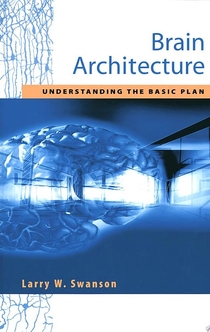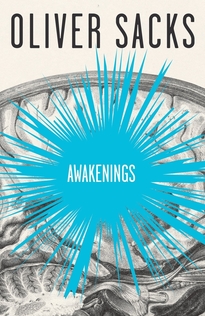
9 Best Books on Neuroscience
0
likes

Brain Architecture : Understanding the Basic Plan
Depending on your point of view the brain is an organ, a machine, a biological computer, or simply the most important component of the nervous system. How does it work as a whole? What are its major parts and how are they interconnected to generate thinking, feelings, and behavior? This book surveys 2,500 years of scientific thinking about these profoundly important questions from the perspective of fundamental architectural principles, and then proposes a new model for the basic plan of neural systems organization based on an explosion of structural data emerging from the neuroanatomy revolution of the 1970's. The importance of a balance between theoretical and experimental morphology is stressed throughout the book. Great advances in understanding the brain's basic plan have come especially from two traditional lines of biological thought-- evolution and embryology, because each begins with the simple and progresses to the more complex. Understanding the organization of brain circuits, which contain thousands of links or pathways, is much more difficult. It is argued here that a four-system network model can explain the structure-function organization of the brain. Possible relationships between neural networks and gene networks revealed by the human genome project are explored in the final chapter. The book is written in clear and sparkling prose, and it is profusely illustrated. It is designed to be read by anyone with an interest in the basic organization of the brain, from neuroscience to philosophy to computer science to molecular biology. It is suitable for use in neuroscience core courses because it presents basic principles of the structure of the nervous system in a systematic way.
See all

An Anthropologist on Mars
To these seven narratives of neurological disorder Dr. Sacks brings the same humanity, poetic observation, and infectious sense of wonder that are apparent in his bestsellers Awakenings and The Man Who Mistook His Wife for a Hat. These men, women, and one extraordinary child emerge as brilliantly adaptive personalities, whose conditions have not so much debilitated them as ushered them into another reality.
See all

Awakenings
Fuming with rage and bitterness six friends band together to avenge the destruction of a small human settlement. Through sheer determination and stoic resolve they succeed, though at what cost? Because of their actions, one of them will fall to the enemy and Velthanjantle, the demonic avatar of Kargonis is resurrected. Though weak, the demon breaks free to reign havoc once again upon the world. Fifteen years later, the demon is fully healed and searching for the mysterious Three Chains of Gold; relics from the War of the Gods, when united, will bring about new balance among the Greater Realms. If Velthanjantle is able to find the chains the dark god could be free once more to walk among mortals. It falls on those who released the demon to gather their forces, train their armies and prepare their guilds to stop the end of the world. Together or separated, six mortals must set in motion the events necessary to save Reality from ultimate doom. From demonic plots and greedy dragons to hardened assassins and pious priests, the demon Velthanjantle quickly becomes the least of their problems.
See all

The Man Who Mistook His Wife for a Hat
With an introduction by Will Self.A classic work of psychology, this international bestseller provides a groundbreaking insight into the human mind.If a man has lost a leg or an eye, he knows he has lost a leg or an eye; but if he has lost a self – himself – he cannot know it, because he is no longer there to know it. In this extraordinary book, Dr. Oliver Sacks recounts the stories of patients struggling to adapt to often bizarre worlds of neurological disorder. Here are people who can no longer recognize everyday objects or those they love; who are stricken with violent tics or shout involuntary obscenities; who have been dismissed as autistic or retarded, yet are gifted with uncanny artistic or mathematical talents. If inconceivably strange, these brilliant tales illuminate what it means to be human. A provocative exploration of the mysteries of the human mind, The Man Who Mistook His Wife for a Hat is a million-copy bestseller by the twentieth century's greatest neurologist.
See all

Affective Neuroscience
Some investigators have argued that emotions, especially animal emotions, are illusory concepts outside the realm of scientific inquiry. However, with advances in neurobiology and neuroscience, researchers are demonstrating that this position is wrong as they move closer to a lasting understanding of the biology and psychology of emotion. In Affective Neuroscience, Jaak Panksepp provides the most up-to-date information about the brain-operating systems that organize the fundamental emotional tendencies of all mammals. Presenting complex material in a readable manner, the book offers a comprehensive summary of the fundamental neural sources of human and animal feelings, as well as a conceptual framework for studying emotional systems of the brain. Panksepp approaches emotions from the perspective of basic emotion theory but does not fail to address the complex issues raised by constructionist approaches. These issues include relations to human consciousness and the psychiatric implications of this knowledge. The book includes chapters on sleep and arousal, pleasure and fear systems, the sources of rage and anger, and the neural control of sexuality, as well as the more subtle emotions related to maternal care, social loss, and playfulness. Representing a synthetic integration of vast amounts of neurobehavioral knowledge, including relevant neuroanatomy, neurophysiology, and neurochemistry, this book will be one of the most important contributions to understanding the biology of emotions since Darwins The Expression of the Emotions in Man and Animals
See all

The Emotional Brain
What happens in our brains to make us feel fear, love, hate, anger, joy? Do we control our emotions, or do they control us? Do animals have emotions? How can traumatic experiences in early childhood influence adult behavior, even though we have no conscious memory of them? In The Emotional Brain, Joseph LeDoux investigates the origins of human emotions and explains that many exist as part of complex neural systems that evolved to enable us to survive. One of the principal researchers profiled in Daniel Goleman's Emotional Intelligence, LeDoux is a leading authority in the field of neural science. In this provocative book, he explores the brain mechanisms underlying our emotions -- mechanisms that are only now being revealed.
See all

The Neuropsychology of Anxiety
The Neuropsychology of Anxiety first appeared in 1982, quickly establishing itself as a classic work in the psychology and neuroscience literature. It presented an innovative, and at times controversial, theory of anxiety and the brain systems, especially the septo-hippocampal system, that subserve it. It rapidly established itself as an important new work in the field. This Second Edition is a significant departure from the first, drawing upon extensive reviews of data from the ethology of defence, learning theory, the psychopharmacology of anti-anxiety drugs, anxiety disorders, and clinical and laboratory analysis of amnesia. The cognitive and behavioural functions in anxiety of the septo-hippocampal system and the amygdala are extensively analysed, as are their separate roles in memory and fear. Their functions are related to a hierarchy of additional structures that control other forms of defensive behaviour. The resulting theory is applied to the typology, symptoms, and therapy of anxiety and phobic disorders, and to the symptoms of amnesia. Available for the first time in paperback, this new edition will be a valuable reference text for researchers and graduate students in psychology, clinical psychology, psychiatry, psychopharmacology, neuroscience, and neurology.
See all

The New Executive Brain
Elkhonon Goldberg's groundbreaking The Executive Brain was a classic of scientific writing, revealing how the frontal lobes command the most human parts of the mind. Now he offers a completely new book, providing fresh, iconoclastic ideas about the relationship between the brain and the mind. In The New Executive Brain, Goldberg paints a sweeping panorama of cutting-edge thinking in cognitive neuroscience and neuropsychology, one that ranges far beyond the frontal lobes. Drawing on the latest discoveries, and developing complex scientific ideas and relating them to real life through many fascinating case studies and anecdotes, the author explores how the brain engages in complex decision-making; how it deals with novelty and ambiguity; and how it addresses moral choices. At every step, Goldberg challenges entrenched assumptions. For example, we know that the left hemisphere of the brain is the seat of language--but Goldberg argues that language may not be the central adaptation of the left hemisphere. Apes lack language, yet many also show evidence of asymmetric hemispheric development. Goldberg also finds that a complex interaction between the frontal lobes and the amygdale--between a recently evolved and a much older part of the brain--controls emotion, as conscious thoughts meet automatic impulses. The author illustrates this observation with a personal example: the difficulty he experienced when trying to pick up a baby alligator he knew to be harmless, as his amygdala battled his effort to extend his hand. In the years since the original Executive Brain, Goldberg has remained at the front of his field, constantly challenging orthodoxy. In this revised and expanded edition, he affirms his place as one of our most creative and insightful scientists, offering lucid writing and bold, paradigm-shifting ideas.
See all

The Ecological Approach To Visual Perception
This is a book about how we see: the environment around us (its surfaces, their layout, and their colors and textures); where we are in the environment; whether or not we are moving and, if we are, where we are going; what things are good for; how to do things (to thread a needle or drive an automobile); or why things look as they do.The basic assumption is that vision depends on the eye which is connected to the brain. The author suggests that natural vision depends on the eyes in the head on a body supported by the ground, the brain being only the central organ of a complete visual system. When no constraints are put on the visual system, people look around, walk up to something interesting and move around it so as to see it from all sides, and go from one vista to another. That is natural vision -- and what this book is about.
See all






